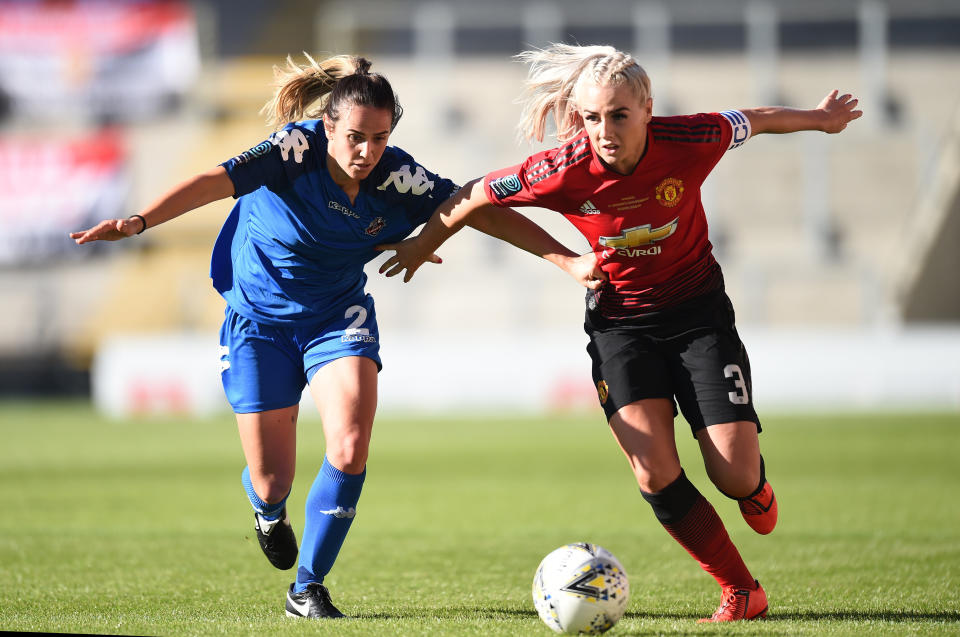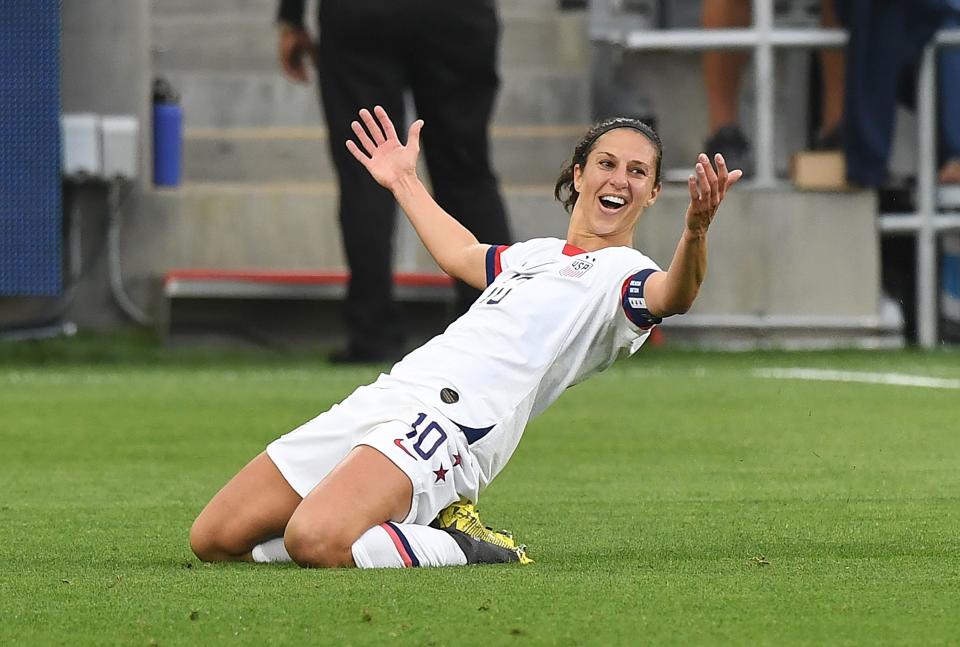Why women's football is finally being recognised for the amazing sport it is

Women’s football has made history, many times over, in 2019 alone.
In the early 20th century, women’s football was extremely popular (before and after the First World War), drawing regular crowds of 50,000. Then, in 1921, women were banned from FA pitches – for the next 50 years.
The last several years have been spent reversing that bad decision from decades ago and pushing women’s football to the forefront, and it’s finally paying off: football is the top participation sport for women and girls in England, and it’s not just women who are getting behind the sport. Nielsen found that 84% of general sports fans are also interested in women’s sport – and over 51% of those are male.
So what are some of the exciting things happening in women’s football at present that we can all celebrate?
This summer’s Women’s World Cup in France sees England sending their first team of full-time footballing professionals – in history. England stars like Steph Houghton and Lucy Bronze, on their way to becoming household names, are leading the way and getting unprecedented support from coaches and medical professionals. For good reason: Bronze has been called the “best player in the world” by England women’s head coach, Phil Neville.
In May 2019, it was announced that FIFA was creating two new awards categories for women: Best FIFA Women’s Goalkeeper and Best FIFPro Women’s World11, another sign that raising the profile of women’s football globally is becoming a priority for the sport’s governing bodies.
In other exciting news, the Women’s Super League got its first-ever title sponsor – Barclays – in a deal the Football Association called “the biggest-ever investment in UK women’s sport by a brand.” The three-year partnership is rumoured to be worth over £10 million. The competition will be renamed the Barclays FA Women’s Super League and includes prize money of £500k for the victors – another first.
This isn’t just major news for women playing the sport: it also means more money will be directed towards promoting the sport to girls of the next generation, through a football partnership scheme in schools, which will give more girls better access to the sport.
READ MORE: Mia Hamm, Sara Gama and the other inspiring female footballers you need to know about

Access – and role modelling – can make a huge difference. England player Alex Greenwood credits the 2002 breakout hit film, Bend it Like Beckham, with inspiring her to pursue a football career professionally, while girls can now get their football fix off the pitch too. Toys are now incorporating female footballers, thanks to the inclusion of women’s teams in FIFA video games (since 2016) and dolls that look like footballing heroes.
There have been other high-profile sponsorship deals in women’s football recently, with brands like Visa, Lucozade Sport, Budweiser, Boots and Nike getting in on the action. This year’s Women’s World Cup marks another historical first: women’s kits will be designed with female athletes’ needs in mind for once. They won’t just be ill-fitting replicas of men’s jerseys, as they have too often in the past.
Where the advertisers go, the money starts to pour in. While the sums are nowhere near as much as in men’s football, this year’s Women’s World Cup winners will see their prize money doubled to £3.1 million (the overall prize fund has doubled from $15m to $30m) – against a backdrop where players are starting to speak out and retaliate against significant gender imbalances in terms of pay and resources. Adidas also announced that athletes on the winning World Cup team will receive the same performance bonuses as their male counterparts.
This isn’t an exclusively English phenomenon: it’s global. In Spain, women’s football has hit an all-time high: the Copa del Reina final in May 2019 had record viewing figures with an average of 1.6m TV viewers watching Real Sociedad triumph over Atlético Madrid. This is after the record-breaking attendance at the game between Atlético Madrid and Barcelona this past March, which saw 60,000 spectators cheering on the female players at the Wanda Metropolitano.
READ MORE: From Vivianne Miedema to Ramla Ali: rising female sports stars to watch out for

Increasing viewing numbers and interest in the sport are only part of the reason that advertisers are so keen to put money into women’s football. It’s also because it tells such an inspiring story.
“Consumers want their brands to stand for something and equality, diversity and inclusion would rank highly in any list of causes. In light of this, it is easy to see that women’s football can add a highly emotive cause-related string to its bow, offering advantages over its male counterpart,” Phil Carling, head of global football at Octagon, told The Drum.
Female footballers are also banding together to show their strength in numbers and fighting back to end discrimination in the sport. The US women’s soccer team sued US soccer for “institutionalised gender discrimination” just three months before the World Cup. They have been striving for years to achieve pay equity, as well as the similar resources in terms of travel, medical treatment and coaching, as the men’s team. This move follows women’s footballers in other countries – from Spain to Norway – getting vocal with their protests against mistreatment and pay discrepancies.
Here’s to all the women’s footballers, our sporting heroes. We can’t wait to see you kick butt this summer.


